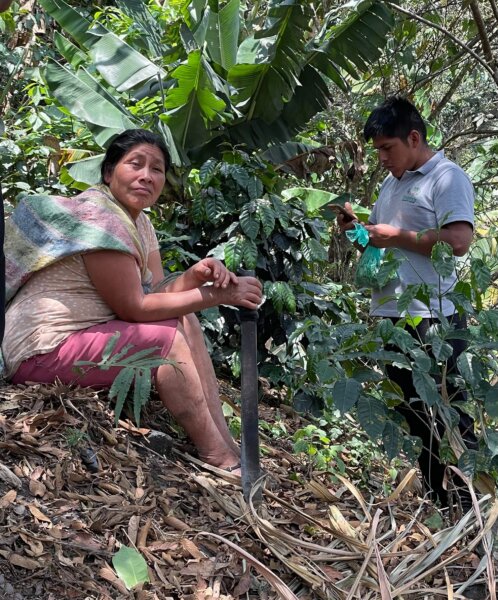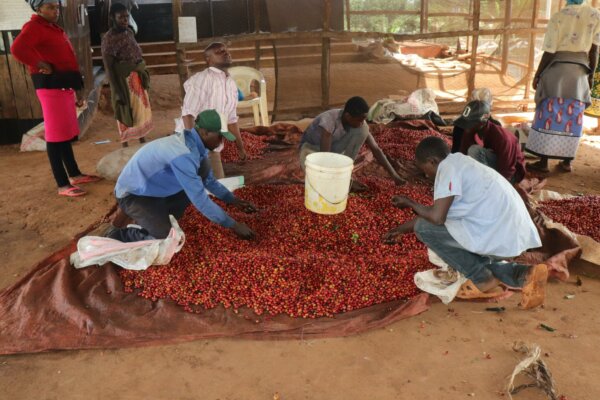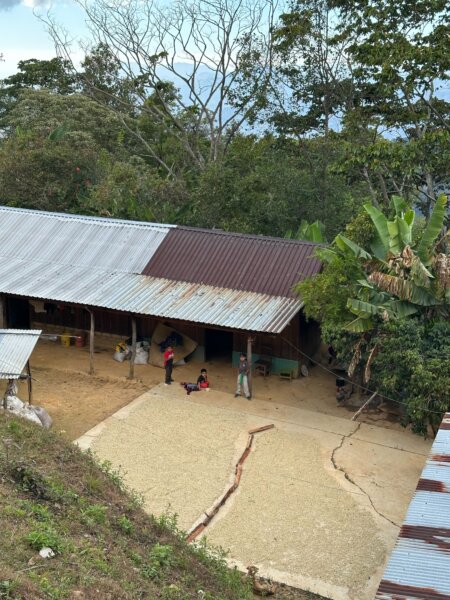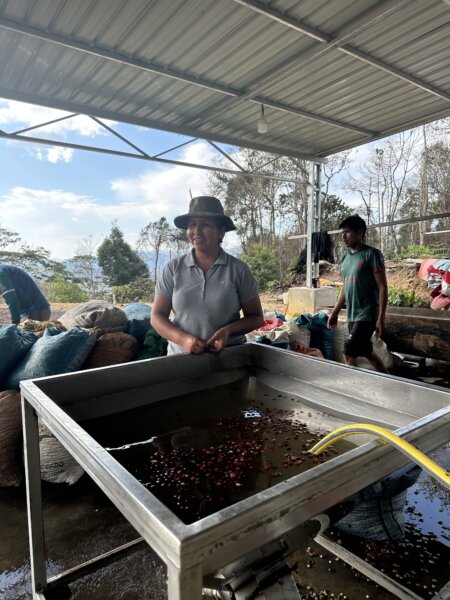As we enter the second half of 2025, we’ve learned to expect the unexpected & prepare accordingly. Logistics remain complicated by geopolitical uncertainty, the historically high C market shows strong signs of letting up, coffees are flying out of the warehouse as fast as we can stock them, & we’re prepping heavily for strong seasons in our southern hemisphere origins. Read on for the scoop on logistics, the C market, & every origin in which we work. Click here to listen.
Logistics, Port, & Warehouse Updates
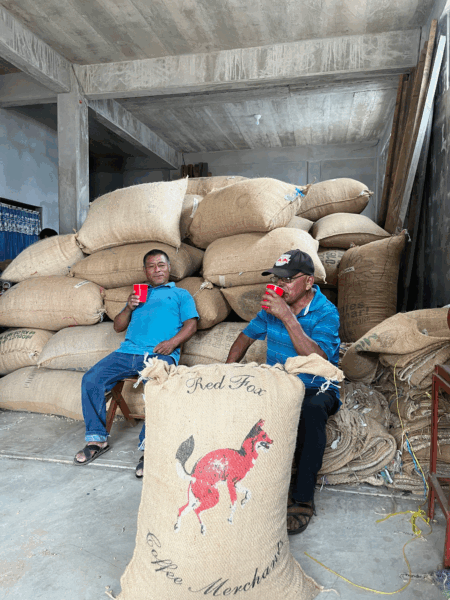 Shippers & ocean freight carriers are all riding the rollercoaster of current US tariff policy. Uncertainty remains high & we continue to see disruptions in global supply chains. In April, in response to the announcement of tariffs on Chinese goods, ocean carriers significantly reduced capacity on their Trans-Pacific Eastbound routes, including canceling service loops, increasing blank sailings, & switching to smaller vessels. After a trade agreement between the US & China in May paused tariffs for 90 days, adjustments went the other direction with capacity expanding & demand surging as shippers race to move inventory from China to the US before the pause ends on August 12.
Shippers & ocean freight carriers are all riding the rollercoaster of current US tariff policy. Uncertainty remains high & we continue to see disruptions in global supply chains. In April, in response to the announcement of tariffs on Chinese goods, ocean carriers significantly reduced capacity on their Trans-Pacific Eastbound routes, including canceling service loops, increasing blank sailings, & switching to smaller vessels. After a trade agreement between the US & China in May paused tariffs for 90 days, adjustments went the other direction with capacity expanding & demand surging as shippers race to move inventory from China to the US before the pause ends on August 12.
More tariff announcements are expected from the Trump administration in the coming weeks as we approach the end of the pause on reciprocal tariffs on July 8. A current tariff rate of 10% applies to almost all coffee-producing origins, with the exception of Mexico, where the USMCA trade agreement makes it the only coffee exporting country with a 0% tariff rate at the moment.
New fees on Chinese-built & owned vessels proposed by the US Trade Representative (USTR) are expected to go into effect on October 14, 2025, though the proposal is not yet finalized. The proposal was revised in April to be less aggressive than the original, with fees assessed per US voyage rather than per port & exemptions for some carriers. Ocean carriers have responded that they will be forced to pass these excess costs on to their customers. The 180-day lead time gives carriers time to adapt their routes & vessels to mitigate costs.
Ports in the US continue to be free of congestion. Strong demand in Latin America, along with equipment shortages & unreliable vessel schedules are causing major congestion in ports in Nicaragua, Guatemala, & Colombia. Canadian railways are experiencing backlogs as shippers divert cargo from the US to avoid tariffs. Rotterdam has seen congestion related to labor disputes.
Supply, Demand, & The C Market
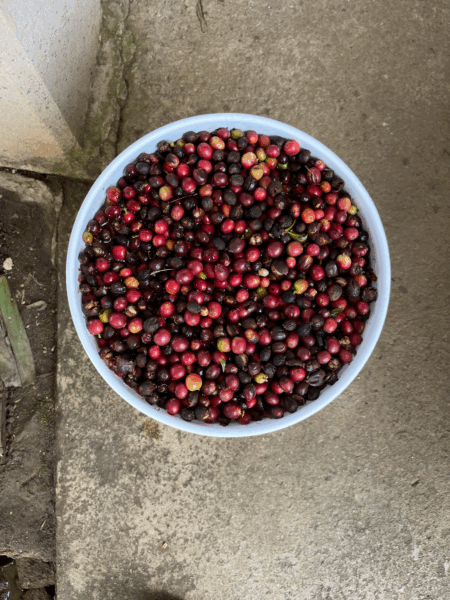 For most of the last quarter, indicators pointed to a mid-high $3 market, mostly riding under $4. Recently, news from Brazil & growth in US coffee stocks have pushed the price down to 6-month lows just under $3. We’re not sure where the bottom is, as coffee stocks have grown to nearly 1 million bags in the US. While it’s an important factor in the trade at large, we will continue to approach sourcing partnerships as we always do: offering as much financial consistency as we can & helping them weather the current widespread liquidity crunch by taking thoughtful committed positions as early into the season as we can & moving the coffee to destination quickly & efficiently.
For most of the last quarter, indicators pointed to a mid-high $3 market, mostly riding under $4. Recently, news from Brazil & growth in US coffee stocks have pushed the price down to 6-month lows just under $3. We’re not sure where the bottom is, as coffee stocks have grown to nearly 1 million bags in the US. While it’s an important factor in the trade at large, we will continue to approach sourcing partnerships as we always do: offering as much financial consistency as we can & helping them weather the current widespread liquidity crunch by taking thoughtful committed positions as early into the season as we can & moving the coffee to destination quickly & efficiently.
Despite the historic high C price of coffee earlier this year, consumer demand has not faltered. National Coffee Association’s (NCA) 2025 Specialty Coffee Report recently stated that specialty coffee consumption surpassed traditional daily coffee consumption. Assuming that study encompasses a pretty wide range of quality, we have also seen strong demand in our niche of top-tier specialty.
In the trade at origin, sourcing remains competitive & prices remain only indirectly capitated to the C market. It has been a real challenge to acquire volumes both in Peru & Mexico, & continues to be so for the qualities, value, & lots that meet Red Fox specifications. Competition for producers’ coffee is more fierce than ever. We will continue to be vigilant on acquisition quality & focused on forecasting needs. Locking in volume when we run forward booking campaigns will continue to be the best way to ensure your needs are fulfilled with Red Fox as our spot position continues to be tightly managed.
Peru
The Peru sourcing team spent May & June meeting with producer groups & evaluating the landscape across the country in preparation for the upcoming harvest. Given the volatility of the C market, the unexpected & tragic departure of the US Agency for International Development (USAID), limited access to capital, & the devaluation of the US dollar, we are anticipating an unpredictable year.
We will officially kick off the season in the second week of July with a team calibration & cupping of the first round of offer samples. This year’s outlook is favorable across Peru for harvest quality & quantity, though the season is slightly delayed due to unseasonable rains that are making drying more difficult.
A combination of factors is making financing tighter than ever this year. Banks & social lenders are extremely conservative following widespread defaults last year, the dismantling of USAID has affected the amount of funding that social lenders have available, & the combination of a high market & a weakening US dollar means existing credit lines don’t go nearly as far as they used to. Many producer groups have seen their credit lines reduced & new financing opportunities are virtually nonexistent. As a result, producer groups must ship coffee quickly to maximize their limited financing & rely on payments from initial shipments to continue collecting parchment. As one co-op manager in Northern Peru put it, “For a small organization with limited liquidity, having stored inventory will kill you.”
Since the start of the current season, local prices have consistently averaged 22-23 Peruvian soles per kilo of clean parchment (compared to 13-14 in 2024 before the price spike & 17-18 after), with higher-quality, higher-yield coffees commanding even higher prices. Our team is monitoring pricing weekly. Local prices remained stable for most of June despite market fluctuations, but have started to drop slightly in the past week, coinciding with the C market’s decline.
We are looking forward to the official start of the season in a few weeks & are excited to get the first containers on the water in early August.
Available Lots:
Our QC & purchasing teams will convene in Lima early July to calibrate & begin sample selection for the season. We expect to begin shipping into warehouses across the US & beyond come August. Stay tuned for forward booking opportunities coming soon.
Colombia
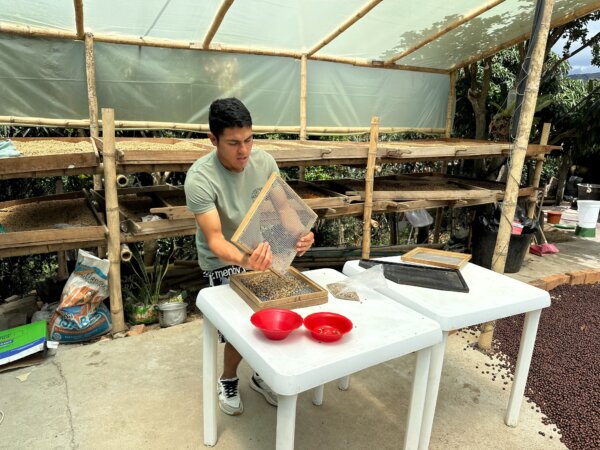 This year’s first semester harvest has begun with picking already underway in Inzà’s San Antonio Pedregal area. Current estimates are for a good production volume. Continuous rains are causing some issues with early ripening & risk of cherry failure. Prices remain sky-high.
This year’s first semester harvest has begun with picking already underway in Inzà’s San Antonio Pedregal area. Current estimates are for a good production volume. Continuous rains are causing some issues with early ripening & risk of cherry failure. Prices remain sky-high.
In Inzà, attacks against the population continue due to guerrilla control of territory. There is a government plan to protect farmers from theft or extortion, but there are still fears of being able to move safely between Inzà & Popayan or from Inzà to La Plata, Huila. The municipality of Inzà in Cauca shares information on its official channels & alerts if there is fighting or harassment nearby so that residents can remain safe.
In Nariño, the first semester harvest is coming on strong. Cherry yields are plentiful thanks to beneficial rains. The first cherry is already being harvested with full harvest beginning next month. Beans are healthy, showing no issues with berry borer (one of the pests that can take advantage of increased rains). Price instability continues in the region.
Available Lots:
Keep an eye out for updates on Colombia forward booking in the coming months. Volumes will likely be slim & carefully curated as in recent years.
Rwanda
Harvest season is at full bore in Rwanda. Cherry buying is wrapping at lower elevations but expected to continue at higher elevations into July. Kanzu washing station began receiving & processing cherry in early March this year, & currently hosts a good volume of coffee drying on raised beds. The harvest there is expected to continue into the first few weeks of July.
This year’s expected crop volume is 15-20% higher than last year across the country. In Nyamasheke, steady rainfall in the early part of the harvest increased cherry volume in the region. The National Agricultural Export Development Board (NAEB) set minimum cherry prices at a new high of 600 RWF/kilo this year (a 25% increase over last year’s minimum price), but competition in the Nyamasheke region drove prices as high as 1,000 RWF/kilo at the peak of harvest this season.
We were on the ground in Rwanda in June to cup through outturns & start making selections for this season. The Kanzu profile we love is on full display—bright tangerine & nectarine acidity, juicy green grape & tart cherry, sweet caramelized sugars & a honeyed body. We aim to have the first container of Kanzu lots afloat this summer for fall arrival to warehouses in the US.
Available Lots:
Stay tuned for info on forward booking this year’s harvest later this summer.
Mexico
The Mexico season has officially wrapped at origin, with all lots approved, milled & either in destination warehouse or in transit. Farms in most areas are now experiencing the first significant rainfalls of the year to trigger flowering for the next harvest. Most regions’ harvests were relatively large, especially Veracruz. Oaxaca was the exception with most areas across the state turning in lower than expected yields. The Red Fox origin team hustled throughout the season to acquire the quality our customers have come to expect. We were present for each milling to ensure each lot will arrive exactly as contracted. Mexico remains the only origin currently not facing tariff threats on imported goods. The later-harvest Veracruz & Puebla lots offer exceptional quality with exemplary community lots showcasing the unique nuances & differences from region to region in this incredibly diverse origin.
Available Lots:
Fresh, top-scoring, organic-certified community lots from Chiapas have just arrived to Houston & will be moving to both coasts. Additional volume of Veracruz & Puebla community lots are shipping now & expected to arrive in early to mid July.
Ethiopia
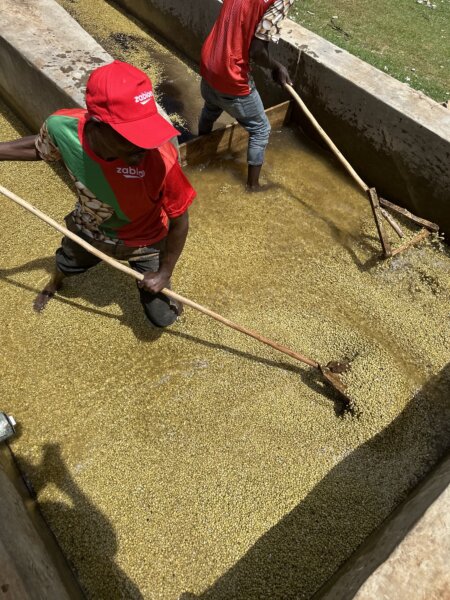 Ethiopia’s harvest concluded a few months ago, though most exporters are still very much in the thick of their shipping season. 20 ft containers have been virtually impossible to come by since early March which now feels par for the course year after year. However, virtually all of our coffee arrived stateside as of late spring.
Ethiopia’s harvest concluded a few months ago, though most exporters are still very much in the thick of their shipping season. 20 ft containers have been virtually impossible to come by since early March which now feels par for the course year after year. However, virtually all of our coffee arrived stateside as of late spring.
Minimum prices continue to drop on a weekly basis as the trade petitions the government for respite in order to sell off the last of their stocks.
We await news in the months ahead as to the rainy season & its hopefully positive impact on next season’s crop.
Available Lots:
We still have some very fresh, top G1 washed lots from Uraga, Guji, Agaro, & Limu still available on both coasts. Please contact your rep for info and sampling.
Kenya
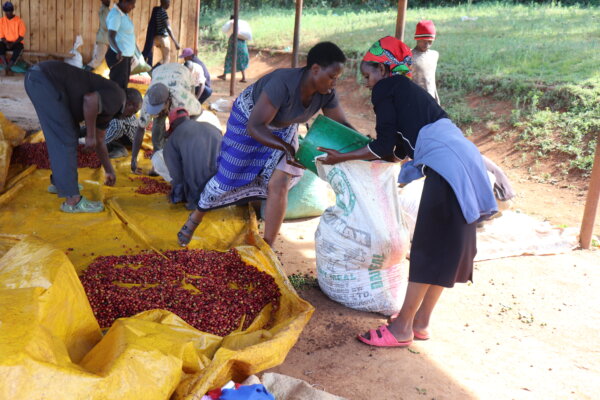 Picking for the Kenyan fly crop is currently peaking, though trading is near non-existent at the moment with auctions on recess until July 8. Rains have been good following the flowering period for the main crop in the coffee growing regions, so we’re hopeful for good quality again after a successful 2024.
Picking for the Kenyan fly crop is currently peaking, though trading is near non-existent at the moment with auctions on recess until July 8. Rains have been good following the flowering period for the main crop in the coffee growing regions, so we’re hopeful for good quality again after a successful 2024.
Quantity-wise, the USDA FAS is projecting a production decrease since government reforms (covered in our last several quarterly updates) took a toll on inputs & certification support programs that were previously provided by now de-licensed marketing agents. These losses are estimated at 6.3% of production. Paired with widespread milling delays due to logistical challenges & congestion, delivering Kenya on time & at quality is harder than ever. However, we’re confident in our ability to continue delivering as we have in past years.
All of our coffees from 24/25 harvest are in the warehouse & cupping with exceptional sweetness & clarity. These coffees can be found on roaster clients’ shelves across the country right now.
Available Lots:
We have a limited number of bags on both coasts, so reach out to your representative for details.
Bolivia
The Las Yungas region of Bolivia’s current crop is now close to peak, slightly earlier than a typical harvest season. Our supply chain partners are receiving high levels of cherry at their washing station in Caranavi & have already begun moving the first parchment deliveries to El Alto for July/August shipment.
Rains have persisted after their normal season, creating a more difficult environment for drying to a consistent water activity. The dryer summer climate is expected in the weeks to come.
Crop expectations for 2025 are either static relative to 2024 or potentially showing slight growth. The Bolivian coffee sector expects to see production trend upwards for the next 5 years, eventually closing in on 70,000 bags/year.
Bolivia will hold its next presidential election on August 17 this year. The Socialist party has seen feuding within as incumbent Luis Arce, & his named candidate successor Eduardo del Castillo, try to fend off Ex-President Evo Morales who is pushing to run for a constitutionally-forbidden third term.
Most basic goods like gasoline, diesel, food, & medicine are direly lacking in supply across the country, creating an insecure environment.
Available Lots:
Our first containers of Bolivian coffee are set to be milled in the next couple of weeks. We expect our first shipments afloat late July/early August for early fall arrival into the US.
Tanzania
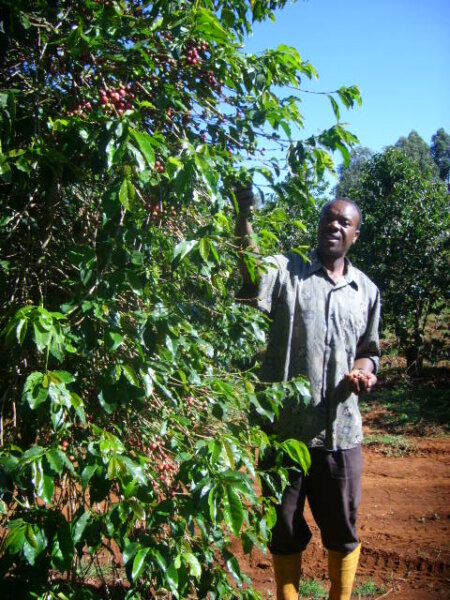 We’re looking forward to bringing Tanzania back to our customers after a successful first year with the origin.
We’re looking forward to bringing Tanzania back to our customers after a successful first year with the origin.
The countercyclical harvest is gaining momentum & we expect to see the first samples from partners in the Mara region shortly. The rest of the country will begin harvesting soon for late fall/early winter delivery. Our hope is to bring coffees in from the same 3 partners as last year while exploring what’s available from surrounding areas, what types of lot separations are possible, & the Tanzanian supply chain at large.
Coffee export across Tanzania was up roughly 10% last year, with the USA consuming 30,000+ more bags than in 2023. A lot of this growth is attributed to Robusta’s growing popularity in Tanzania. Paired with a volatile year where East African Arabica presented a remarkable value, it’s easy to see why coffee export is up.
Available Lots:
We’re currently sold out of Tanzanian lots, but look forward to offering them later this year. Alongside more expected applications of Tanzania as an East African coffee on client menus, we’ve also seen some customers turn to AB grades for blending during a volatile year, showing their versatility.
Guatemala
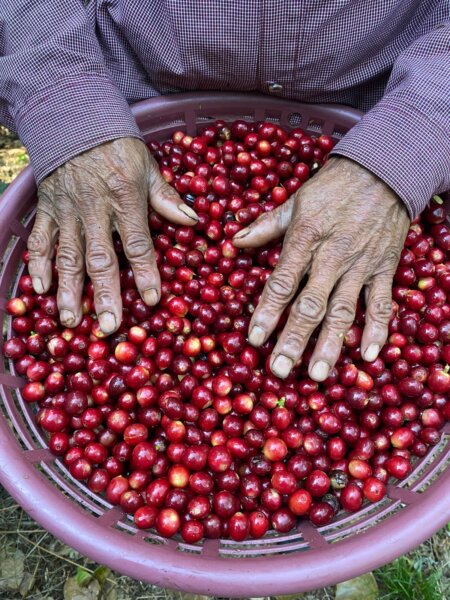 Due to market forces and increased competition, we decided to focus our sourcing in Mexico this harvest—we have a deeper reach into the supply chain & can bring more overall value to our customers.
Due to market forces and increased competition, we decided to focus our sourcing in Mexico this harvest—we have a deeper reach into the supply chain & can bring more overall value to our customers.
Interested in sourcing coffee with us? Reach out at info@redfoxcoffeemerchants.com. To learn more about our work, check out our journal and follow us on Instagram @redfoxcoffeemerchants.

